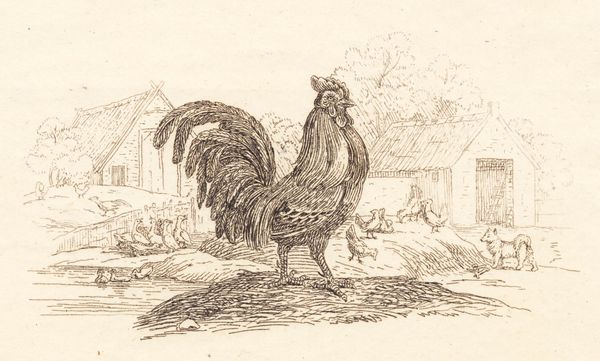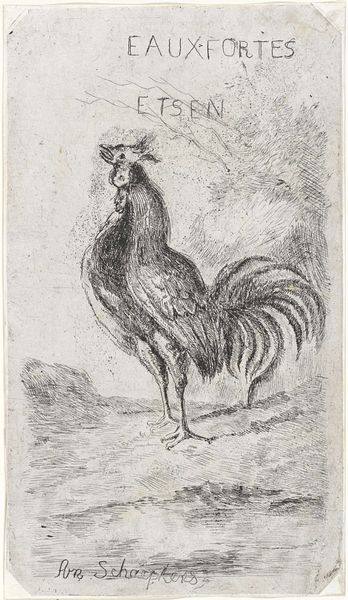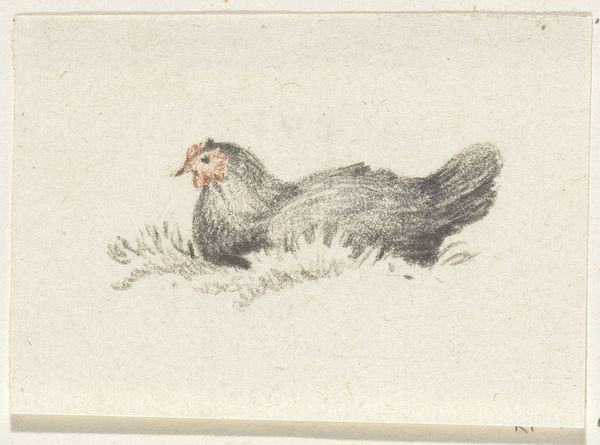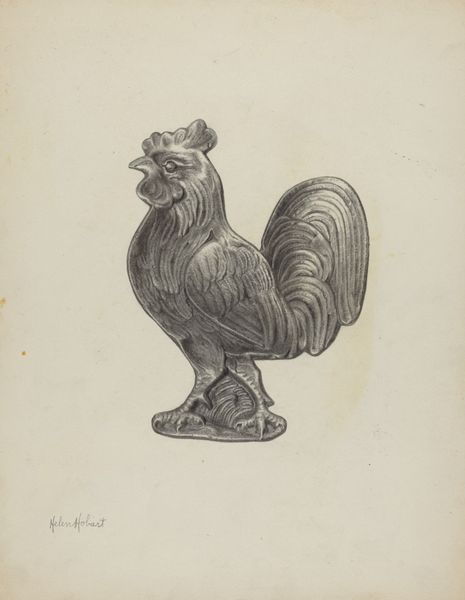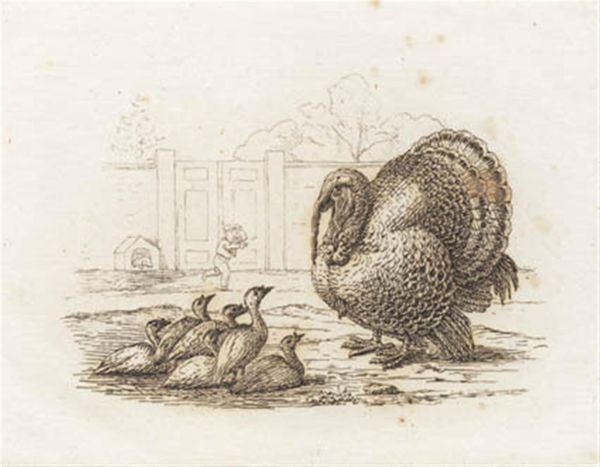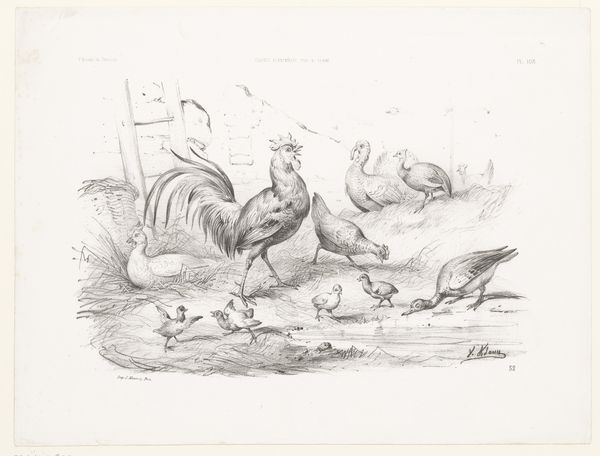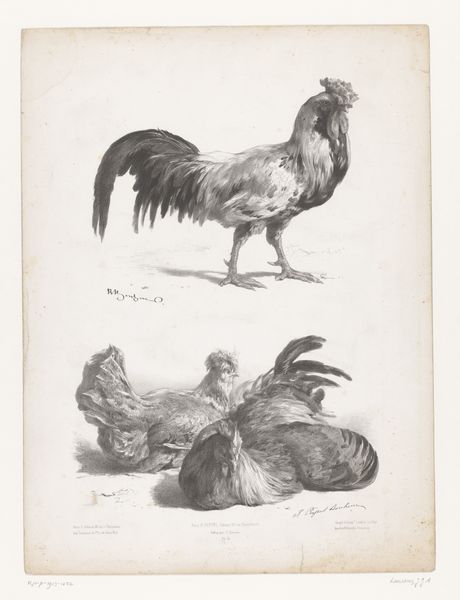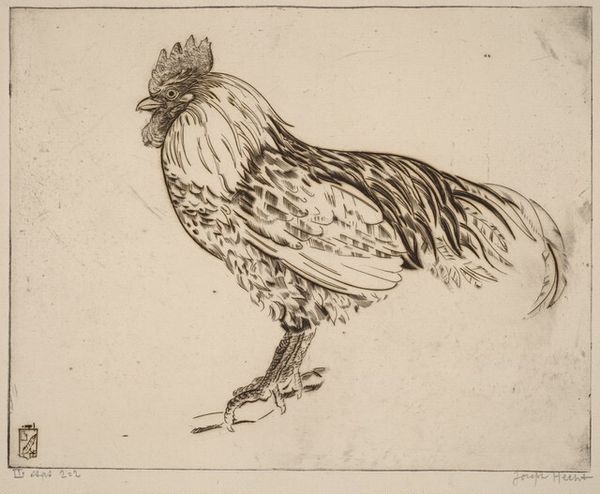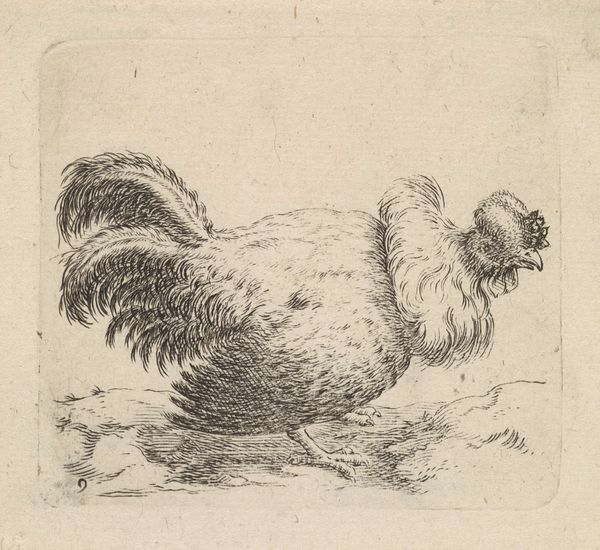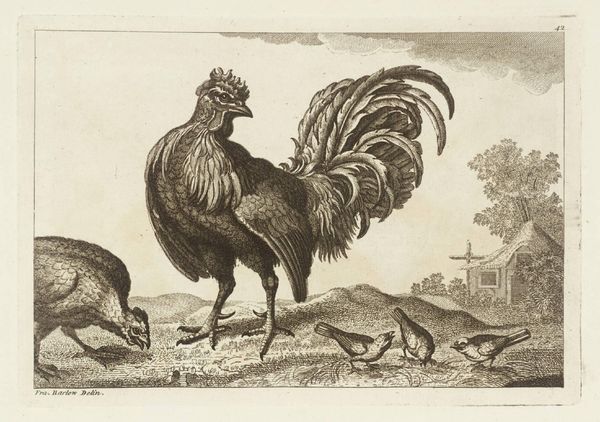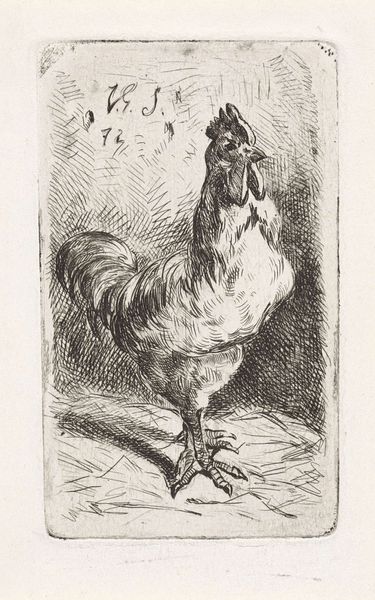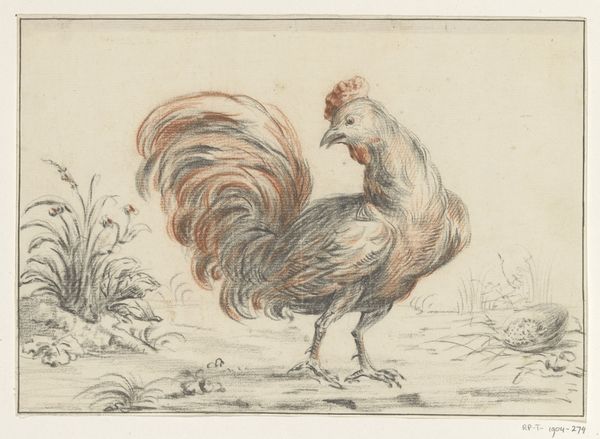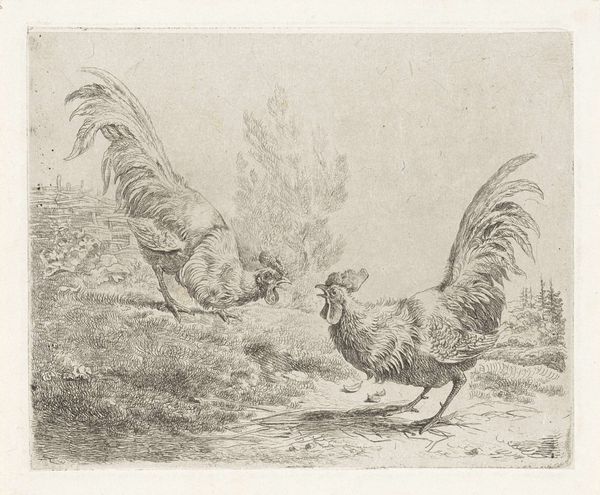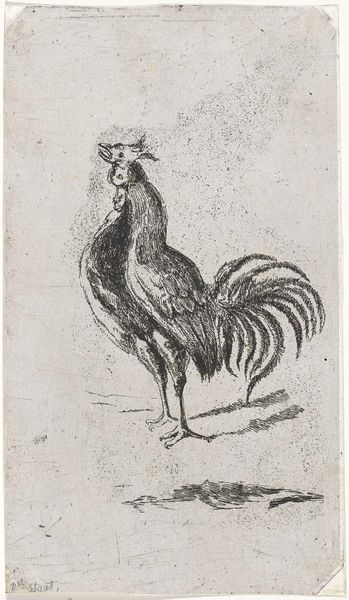
Illustration til "Halvhundrede Fabler for Børn" af Hey 1834
0:00
0:00
drawing, print, ink, engraving
#
drawing
# print
#
landscape
#
figuration
#
ink
#
genre-painting
#
engraving
#
realism
Dimensions: 141 mm (height) x 259 mm (width) (bladmaal)
Curator: Look at this darling illustration—it practically clucks with rustic charm. It’s Martinus Rørbye's "Illustration til 'Halvhundrede Fabler for Børn' af Hey," made with ink and engraving around 1834. Editor: It does have a certain homespun quality, doesn't it? That rooster in the foreground, puffed up with pride, gives it an immediate feel of...what's the word…authenticity, almost. It feels very…grounded. Curator: Absolutely. Rørbye has captured a slice of everyday life, you know? You've got the rooster, obviously, a symbol of vigilance and dawn, surrounded by a flurry of hens, perhaps a dog lazily guarding the barn. Each element is imbued with cultural symbolism. Editor: Tell me more about the hens, they remind me of motherhood. Aren't they emblematic of the domestic sphere? Curator: Exactly! Hens symbolize domesticity and fertility. And notice how the humble buildings form the backdrop, like the rooster, symbols of enduring labor and nature's cycle, set the scene for something greater. There’s a certain weight these images bear. The drawing feels much more complex now. Editor: I love how Rørbye balances a very simple composition with rich layers of narrative depth. This picture is telling me about the stories from when I was a kid. Curator: And think about that intent! Rørbye created this engraving for a children’s book—so the symbols aren’t accidental, right? He used the symbols and simple realism to instill lessons and impart wisdom. Each choice makes it more meaningful. Editor: Looking at it again with fresh eyes—Rørbye wasn’t merely depicting a barnyard scene. He constructed a narrative imbued with layers of symbolic significance. It's like unearthing cultural memories, one visual element at a time. Curator: Exactly! So, the drawing doesn’t just stand as pretty picture—it acts like cultural bridge, whispering stories from a different time. Isn't that wonderful? Editor: Absolutely. And I realize my own preconceptions colored my initial interpretation. Fascinating how easily we imprint our individual narratives onto visual stories. I need to reflect on this now.
Comments
No comments
Be the first to comment and join the conversation on the ultimate creative platform.
